Patryk Chudzik, PCMA UW
The expedition from the Polish Centre of Mediterranean Archaeology, University of Warsaw continued its field work in the temple of Hatshepsut at Deir el-Bahari concerning activities in the 2022/23 winter season. The research were undertaken in two parts: Autumn season from 10th November to 11th December 2022, and Spring season from 30th January to 16th March 2023.
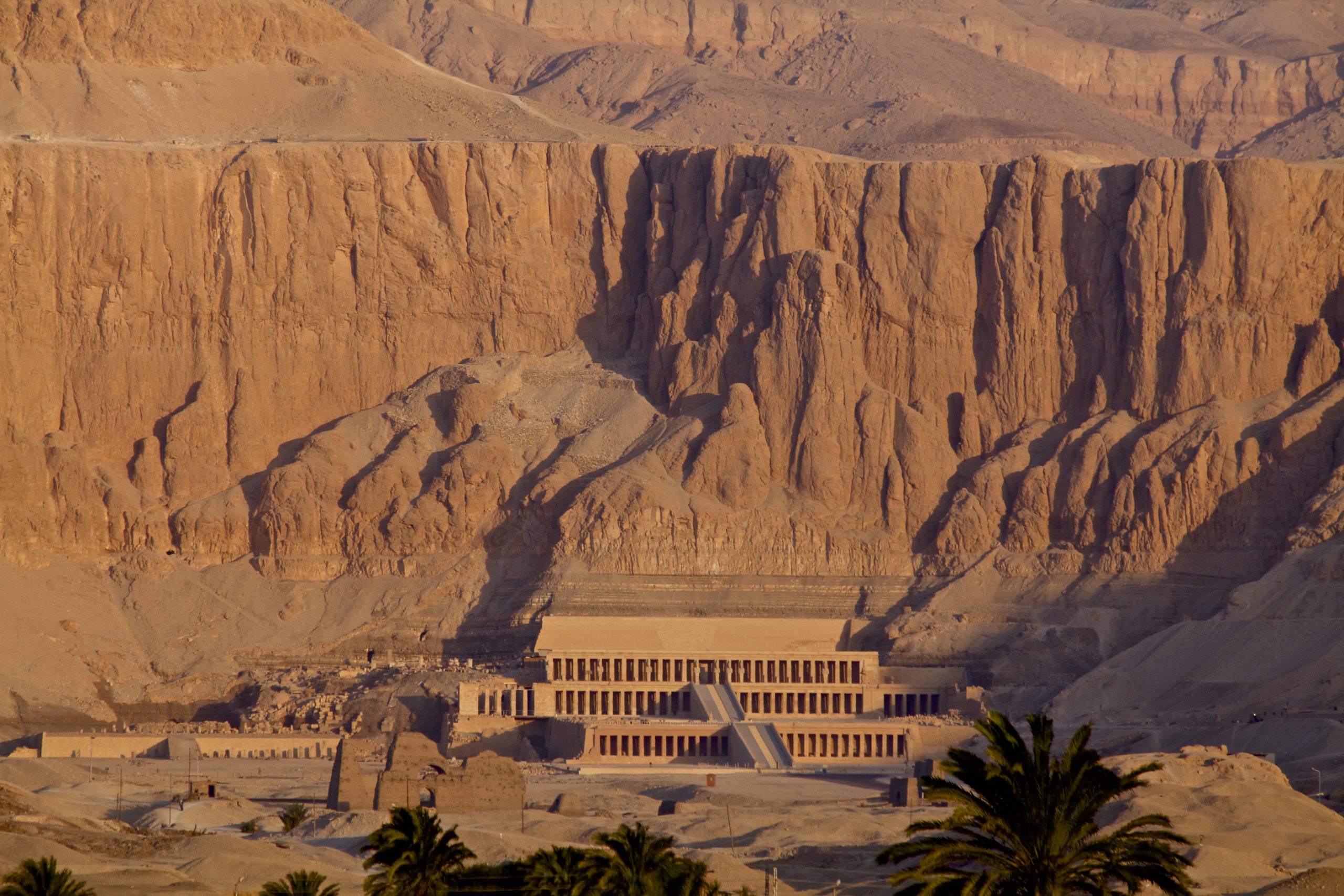
Restoration and conservation work
During these campaigns, the team pursued the main objective of its work at Deir el-Bahari, namely restoration and conservation treatments. These activities were conducted by the team from the Academy of Fine Arts in Warsaw under the direction of Prof. Krzysztof Chmielewski together with the art conservator Monika Czerniec and restorer Wojciech Myjak in cooperation with the team of restorers from the Supreme Council of Antiquities. The work involved the reconstruction of the Osiride statue of Hatshepsut on the third terrace to its fullest, as possible, form, sandstone sphinx statue of the female king standing by the main processional avenue, as well as a small niche in the Royal Cult Complex. In addition, the restoration work has included the reconstruction of the age of the Ptolemaic limestone sarcophagi, the Ramesside stela of Tia and many other stone objects discovered at the Deir el-Bahari site.
Conservation work was conducted in two chapels located on the middle terrace of the temple: Lower Anubis Shrine and Hathor Shrine. Activity in the first began with documenting the damage, determining its causes and planning the next steps of treatments. Documentation work was supplemented with microscopic and UV images. Initial cleaning tests were made in order to establish the best conservation actions.
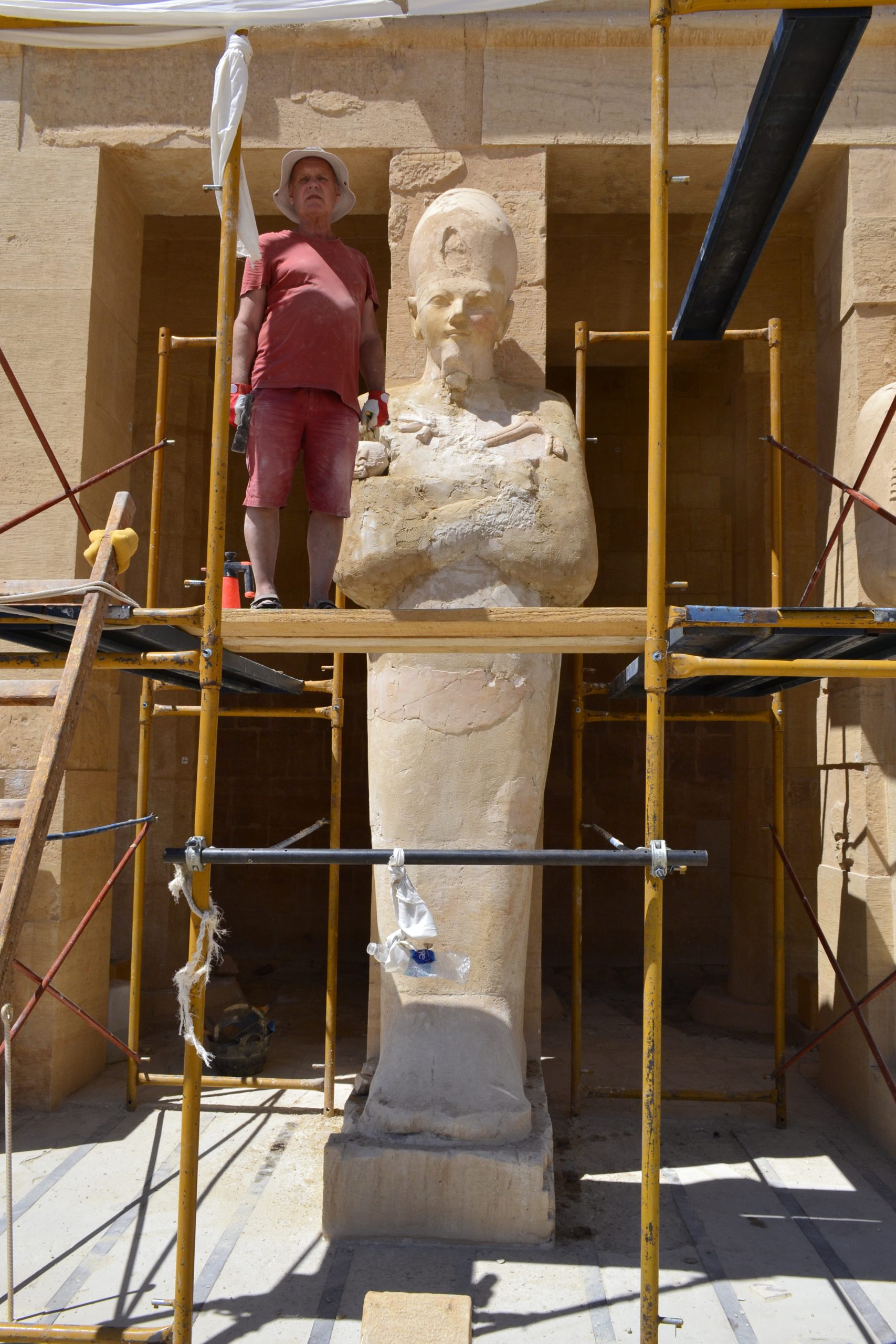
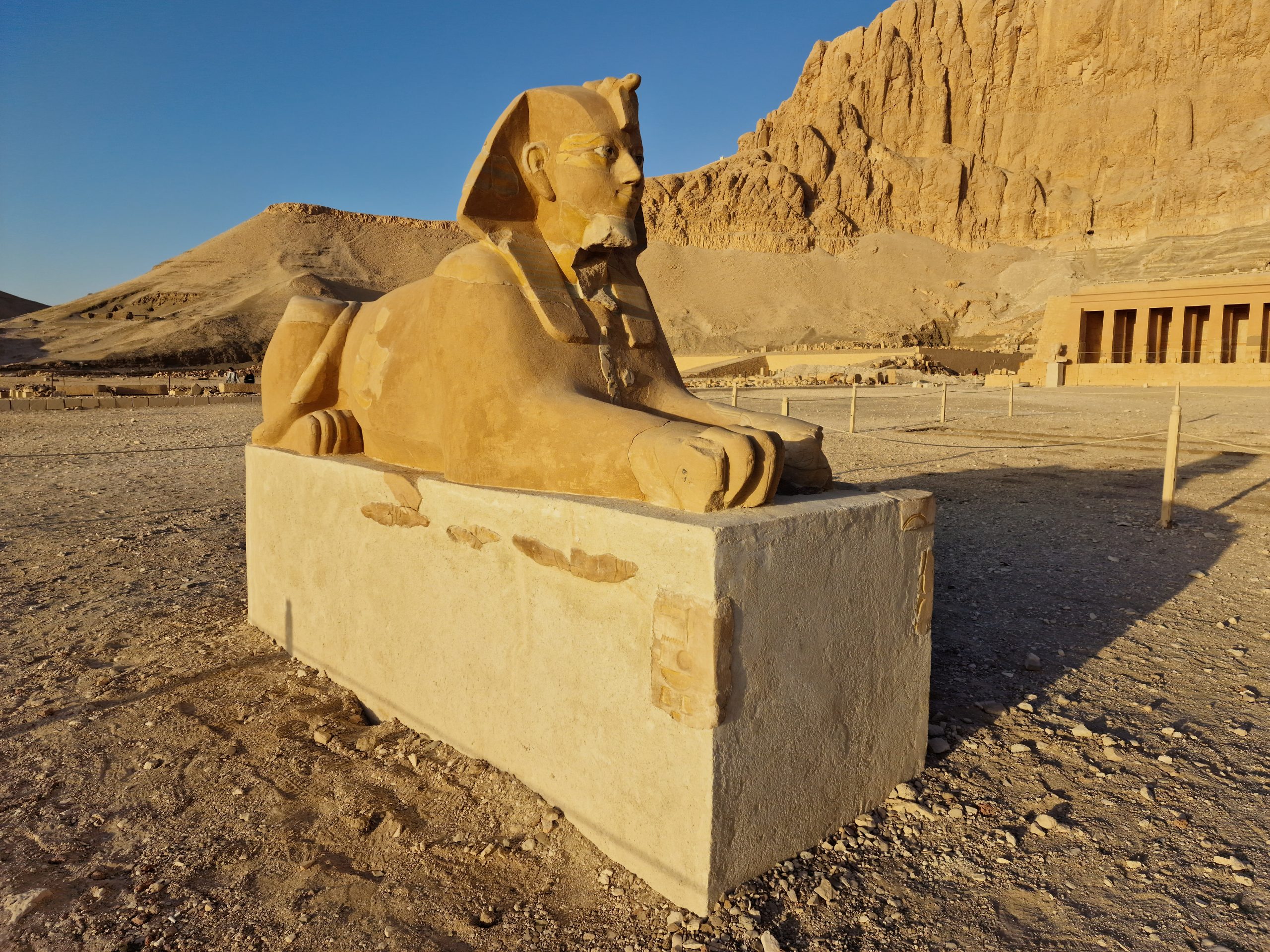
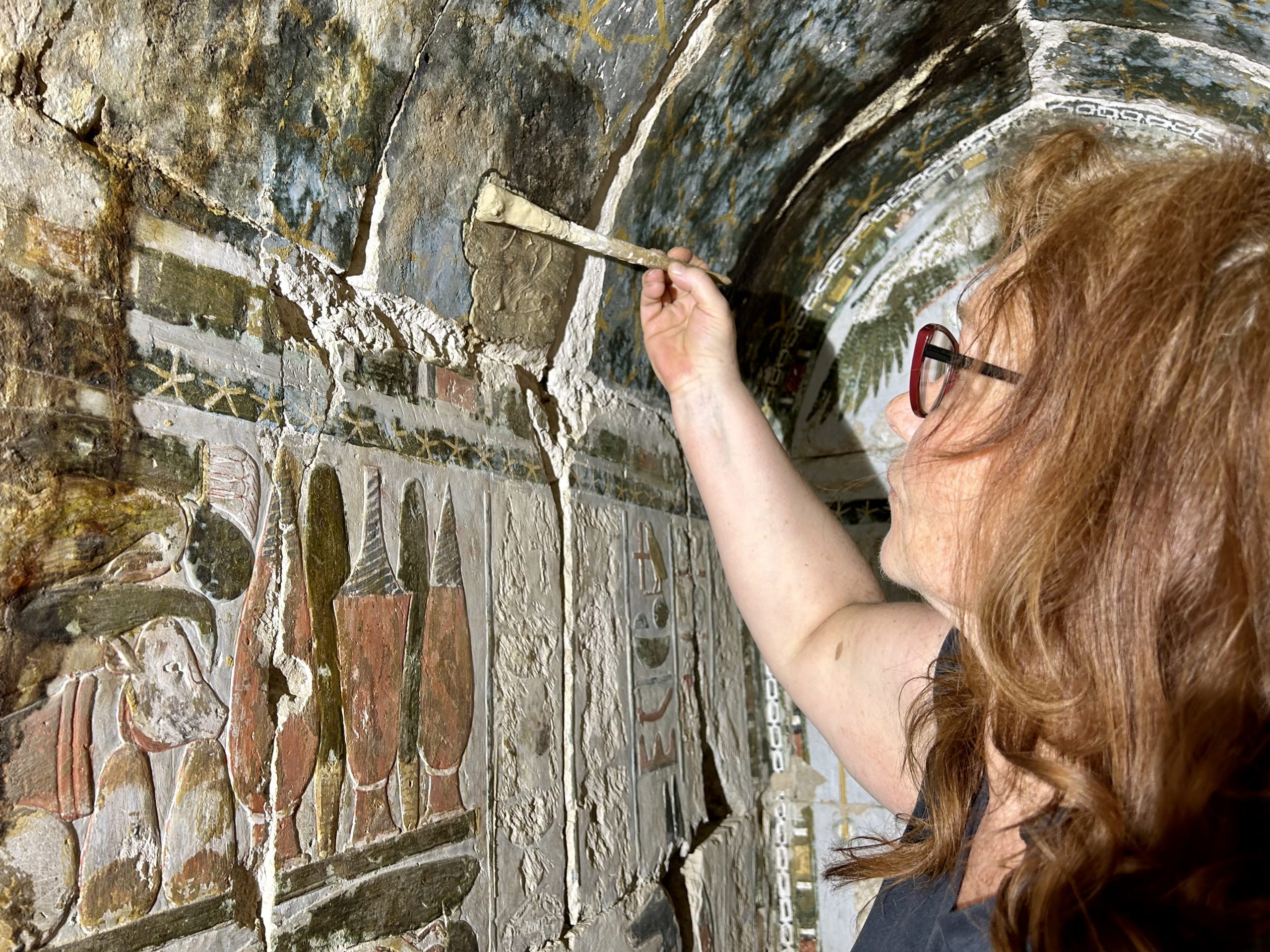

Archaeological activities
This past winter season saw the continuation of excavations in the southern part of the temple as part of the Hathor Project. This work led to the discovery of another four tombs inside the chapel. They belonged to the post-New Kingdom cemetery established on the Hatshepsut temple ruins at the beginning of the first millennium BCE. There were eight tombs in total carved into the rock floor of Hathor Shrine. All of them consist of a simple, vertical shaft, none of which exceeded 5 m in depth, and a small, roughly hewn burial chamber at the bottom. All of these tombs were filled with rock rubble without any stratigraphic sequence containing the shattered remains of burials and grave goods. The repertoire of finds made it possible to reconstruct the chronological sequence of the formation and development of this necropolis. On this basis, it was established that the first tombs were created in the 22nd and/or 23rd dynasties, with the intrusive burial(s) during the 25th dynasty. In the first centuries AD, the Hathor Shrine, like other parts of the Deir el-Bahari sacred space, became a burial site again, as indicated by the remains of Roman burials.
After completing the excavations inside the Hathor Shrine, our attention turned to the hypostyle halls that preceded it. A series of small test trenches were opened in order to examine the construction of this part of the cow goddess cult complex.
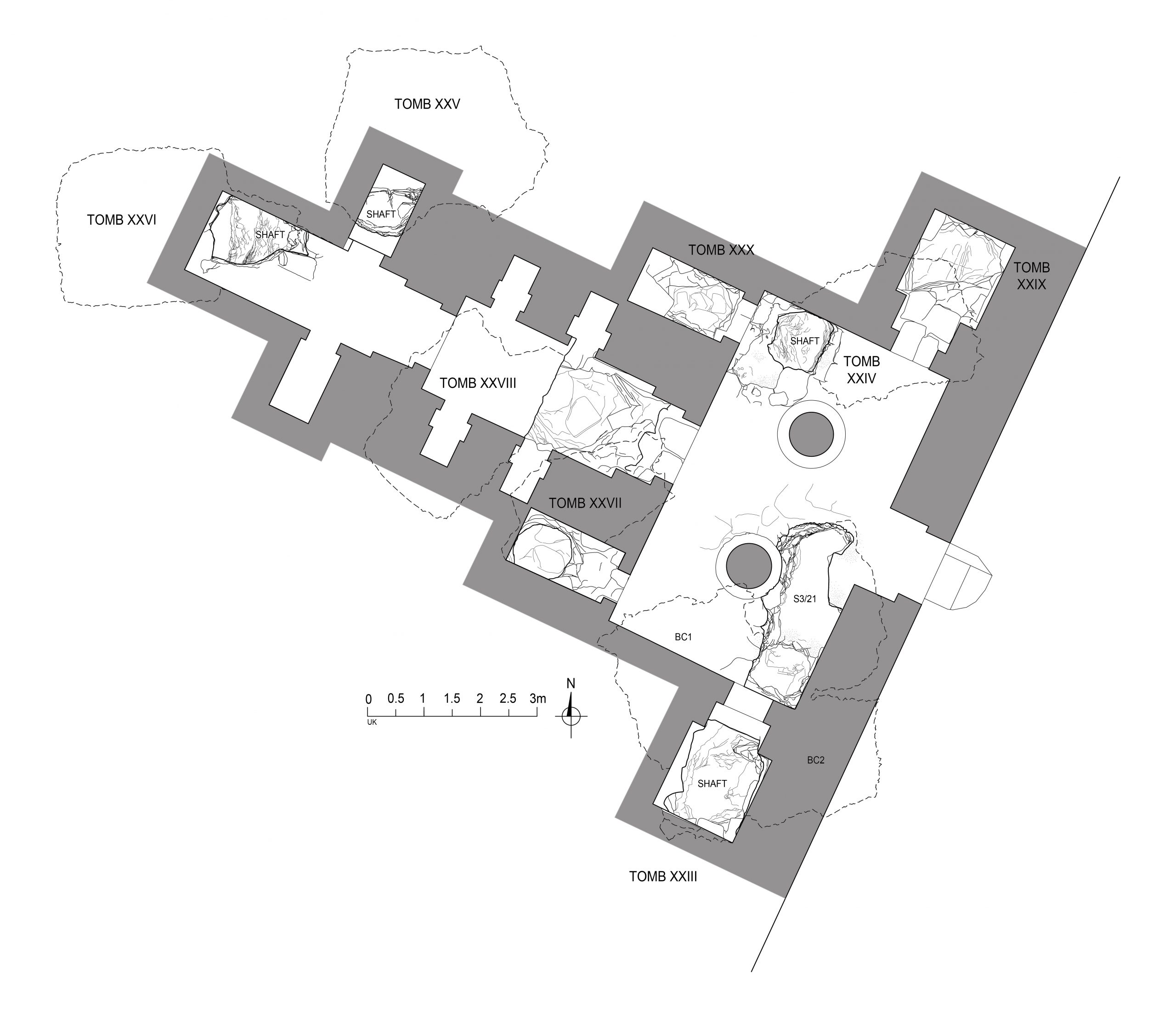

Opening ceremony
After many years of archaeological, restoration, and conservation work, the Northern and Southern Rooms of Amun on the third terrace of the Temple of Hatshepsut have been opened to the public. Besides, the reconstruction of a group of statues of the female king set up in different parts of the complex has been officially completed. The opening took place on 9th February 2023 in a ceremony that was attended by Dr Mustafa Waziri (Secretary General of the Supreme Council of Antiquities), Dr Anna Wodzinska (director of the PCMA UW Research Centre in Cairo), Dr Zahi Hawass, many high officials from the Ministry of Tourism and Antiquities, and members of foreign archaeological missions.

